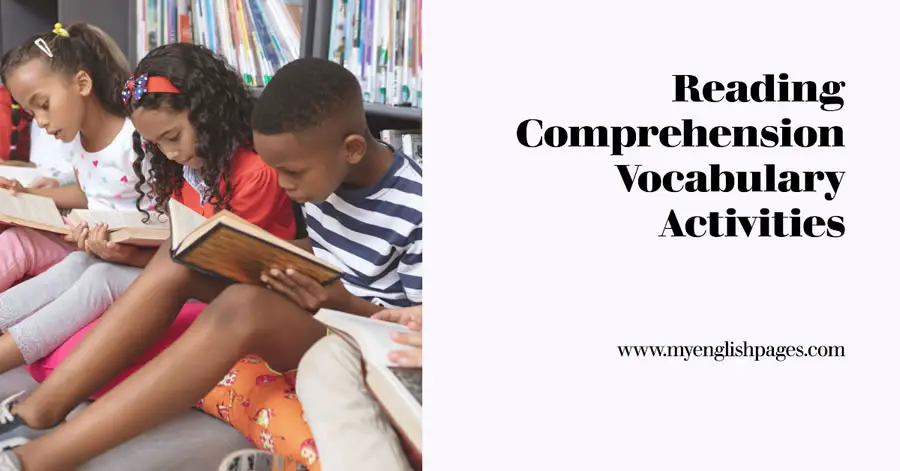This post is about reading comprehension vocabulary activities. For a step-by-step article on teaching reading comprehension, check this guide on how to teach reading comprehension.
Table of Contents
Introduction
Vocabulary plays a crucial role in reading comprehension. When students encounter unfamiliar words, their ability to understand the text can be significantly hindered. To bridge this gap, integrating vocabulary activities into reading lessons is essential.
These activities not only help students grasp the meaning of new words but also enhance their overall comprehension skills. Below is a collection of vocabulary activities that can be seamlessly incorporated into your reading comprehension lessons.
Reading Comprehension vocabulary activities

1. Engaging Students with Words: A Vocabulary Activity
Overview
This activity focuses on helping students engage cognitively with unfamiliar words they will encounter in a text. By interacting with the words before diving into the text, students are better prepared to comprehend the material.
Steps:
- Word Selection: Pick out key unfamiliar words from the text.
- Identification: Ask students to identify these words in the text.
- Definition Matching: Have students match the words with English definitions from a dictionary, using the context to guess the correct meaning.
- Antonyms and Synonyms: Ask students to find antonyms and synonyms for the selected words using a dictionary.
- Part of Speech Identification: Have students decide whether the words are nouns, verbs, adjectives, or adverbs.
- Sentence Creation: Encourage students to use the words in sentences.
Follow-up Activity:
Finally, students can write a short paragraph using these words, either summarizing the text or creating a new story that incorporates the vocabulary.
2. Vocabulary Prediction
Overview
This activity involves predicting the meaning of new words before reading the text. It encourages students to use their prior knowledge and context clues to infer word meanings.
Steps:
- Pre-Reading: Before reading, present students with a list of challenging words from the text.
- Prediction: Ask students to predict the meanings of these words based on the context of the surrounding sentences or their own knowledge.
- Verification: After reading, students compare their predictions with the actual meanings, discussing any differences and refining their understanding.
3. Vocabulary Mapping
Overview
Vocabulary mapping is a visual activity that helps students explore relationships between words. It enhances comprehension by encouraging students to think about how words connect to one another.
Steps:
- Word Selection: Choose a set of key vocabulary words from the text.
- Mapping: Create a mind map with the selected word in the center. Branch out to related words, synonyms, antonyms, and definitions.
- Discussion: Discuss how these words are related to each other and to the overall theme of the text.
4. Contextual Vocabulary Sentences
Overview
This activity focuses on using context clues to understand the meaning of unfamiliar words in a text.
Steps:
- Identify Context Clues: As students read, ask them to identify sentences or phrases that provide clues to the meaning of unfamiliar words.
- Define Words: Have students write down their definitions based on the context.
- Class Discussion: Discuss these definitions as a class and refine them with dictionary definitions if necessary.
5. Vocabulary Quizzes and Games
Overview
Games and quizzes make vocabulary learning interactive and fun, while also reinforcing word meanings and usage.
Activities:
- Word Matching Quiz: Create a quiz where students match vocabulary words with their definitions.
- Vocabulary Bingo: Play a game of bingo where students must match words to their correct definitions to win.
- Word Jumble: Provide a list of scrambled vocabulary words and ask students to unscramble them, then use them in sentences.
Conclusion
Incorporating vocabulary activities into reading comprehension lessons is vital for helping students grasp the meaning of new words and improve their overall understanding of texts.
These activities not only make learning more engaging but also empower students to become more confident and proficient readers.
Actively involving students in the process of learning new vocabulary can significantly enhance students’ reading comprehension skills, leading to better academic outcomes.


